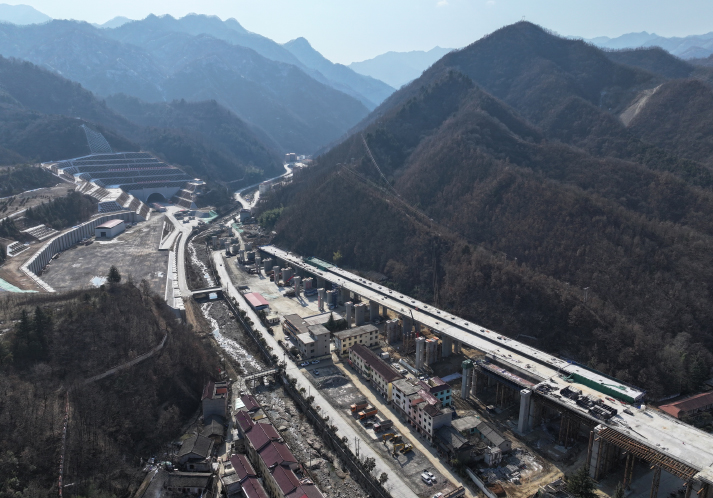| China |
| The power of China's railways | |
|
|
 The Xi'an-Ankang High-Speed Railway is under construction in Shaanxi Province in northwest China on January 26 (XINHUA)
China is the world's third largest country by total land area, so the development of railways is a key issue in passenger and freight transportation. Today, the Chinese railway network is one of the largest in the world and railway infrastructure continues to develop at a rapid pace. I was born and raised in the Russian city of St. Petersburg. Living in China has brought, and continues to bring, many discoveries to me, because everyday life in Russia and China is somewhat different. A real shock for me was the recent realization that I had visited more Chinese cities in four months of living in China than I had Russian cities in my 23 years of living there. I didn't immediately believe the number could be accurate, but after counting again, I realized it really was. Reflecting on the reason for this, it quickly became obvious to me that it was due to the incredibly developed railway network in China. It was the Chinese railway infrastructure that helped me visit the bronze Buddha statue in Wuxi (29 minutes by high-speed train from Shanghai), Tongli Town in Suzhou (23 minutes), Feilai Peak in Hangzhou (45 minutes) and Tiananmen Square in Beijing (4 hours and 30 minutes). By the end of 2023, China had more than 159,000 km of railways, the second longest network in the world. It had more than 45,000 km of high-speed railways (HSRs), the longest HSR network in the world. The modernization of China's railway network began in the 1990s. In 1993, the average speed of trains was less than 50 km per hour. The government realized that existing railways would not be able to provide the necessary capacity and speed for the growing passenger traffic. By the end of the decade, programs were in place to lay new tracks and increase speed. In 2006, China had only one high-speed maglev (magnetic levitation) line from downtown Shanghai to the city's Pudong International Airport. The train does not run on rails, but, as we say in Russia, "on a magnetic cushion." It reaches speeds of up to 431 km per hour along the 30-km line. In China, there have been long discussions on whether to build railways with tracks or maglev. While high-speed tracks have been the primary path forward for national railway development, China has also developed maglev trains capable of traveling at over 600 km per hour and plans to build an intercity maglev line between Shanghai and Hangzhou. The Beijing-Tianjin HSR, the first HSR line in China with a design speed of 350 km, opened in 2008. The development of high-speed trains in China has since reached an amazing pace and today the network is longer than those in Japan and Europe combined. It is important to understand that China's high-speed railways are completely new branches, and not an upgrade of existing ones. For comparison, in Russia there are no dedicated railway lines for high-speed trains, with its high-speed trains running on ordinary tracks and ordinary trains blocked to facilitate high-speed operation. Russia's high-speed trains travel two routes—St. Petersburg-Moscow and St. Petersburg-Nizhny Novgorod, while the HSR in China covers most of the country. The railway network has become an important facilitator of the nation's economic and social development. At the same time, for me, as a foreign student, the developed railway infrastructure helps me explore and make the most of my time here in China. BR The author is a Russian student at East China Normal University in Shanghai Copyedited by G.P. Wilson Comments to yanwei@cicgamericas.com |
|
||||||||||||||||||||||||||||||
|